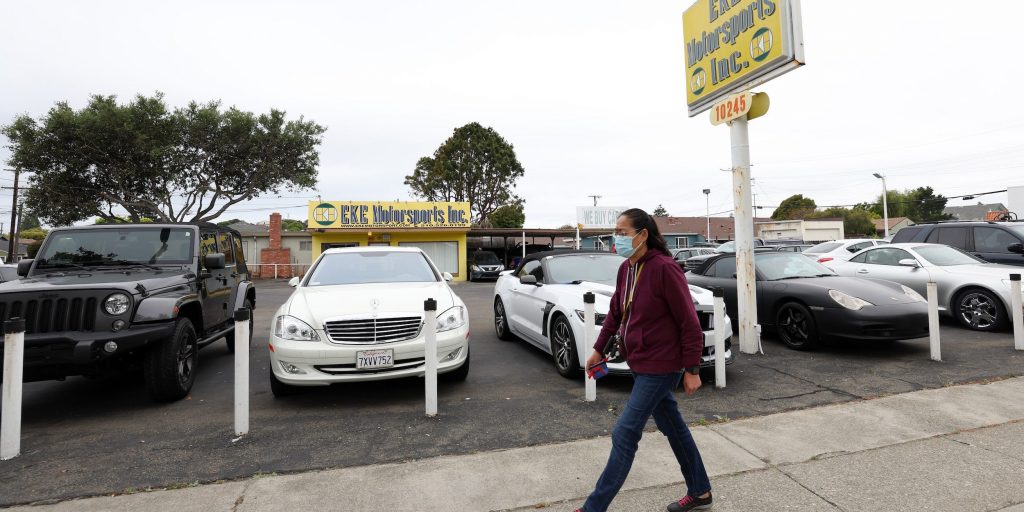- The seller's market for used cars and vehicles is starting to wobble.
- Prices for used vehicles fell 0.4% in April, marking a third consecutive month of declines.
- The drop is a welcome sign for buyers after used vehicles powered much of the 2021 inflation surge.
The seller's market for used cars just celebrated its one-year anniversary, yet it's already on its last legs.
Used vehicles were hit hardest by rising inflation as the economy reopened and spending boomed in early 2021. Pent-up demand for cars slammed into the global semiconductor shortage, crimping supply for both new and previously owned vehicles. That powered a massive price spike. Used car and truck prices rose more than 10% in April and June of last year and counted for roughly one-third of overall inflation throughout last spring.
Headline inflation has since soared to levels not seen since the 1980s, but the used vehicle prices that powered the initial surge are now falling back to earth. Used car and truck prices fell 0.4% in April, according to government data published Wednesday. That follows a 3.8% decline in March and a 0.2% drop through February.
After months of extraordinarily large price hikes, it might finally be a good time for car buyers.
Prices for used cars and trucks now sit about 48% higher than pre-pandemic levels, Insider calculated with data from the Bureau of Labor Statistics. While that's still a hefty price hike for a 28-month period, it's down significantly from the January peak when prices were about 54% higher.
Other measures show the market continuing to cool off through April. The Manheim Used Vehicle Value Index fell to 221.2 last month, down from the March reading of 223.5. That's the lowest level since September 2021. The measure also shows used vehicle values peaking in January, signaling the recent slump is likely a prolonged downtrend.
Several factors stand to extend the cooldown. Spending on durable goods — think vehicles, furniture, and appliances over food and medicine — declined through February and March, alleviating some of the demand that's boosted inflation. The pandemic-era drop in new vehicle inventories has also slowed through 2022. If the supply of new cars recovers, that will likely alleviate supply pressures in the used-vehicle market as more cars are resold.
To be sure, rising interest rates present a new hurdle for buyers looking to take advantage of falling prices. The Federal Reserve lifted its benchmark interest rate by half a percentage point in May, doubling the size of its typical rate hikes in a bid to more aggressively ease inflation. The central bank's rate increases affect borrowing costs throughout the economy, and while most auto loans have fixed rates, the higher rate will make loans pricier in the months ahead.
Fed Chair Jerome Powell hinted earlier in May that more double-sized rate hikes are "on the table" for the Fed's summer meetings, meaning vehicle financing will only get more expensive through 2022.
Still, the decline in headline prices will bring much-needed relief for buyers after months of double-digit price increases and widespread shortages. Used vehicles might not completely be a buyers' market just yet, but it's moving in that direction.
